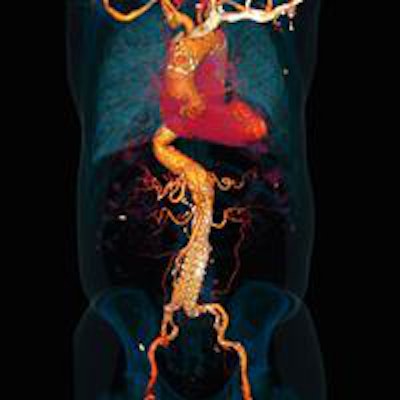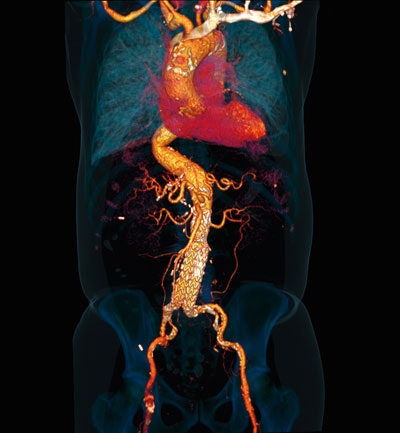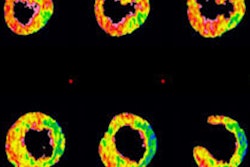
Siemens Healthcare unveiled its latest CT scanner, Somatom Force, today in a demonstration at University Medical Centre Mannheim in Germany.
Somatom Force introduces several features aimed at making CT scanning safe and accurate for the most sensitive patients, such as young children and adults with renal insufficiency.
 Siemens Somatom Force CT scanner. Image courtesy of Siemens Healthcare.
Siemens Somatom Force CT scanner. Image courtesy of Siemens Healthcare.The new dual-source scanner is powered by two Vectron x-ray tubes paired with the firm's new Stellar Infinity detectors (2 x 96 detector rows), which enables routine examinations using tube voltages as low as 70 kV going all the way up to 150 kV in steps of 10 kV. The wide range of tube voltages is completely integrated with the firm's CARE kV automated exposure control, which adapts kV to patient size and application.
Siemens researchers in Mannheim have found that the average quantity of contrast medium administered in thoracic CT scans can be cut from 90-110 mL to around 25-35 mL, the company said.
The scanner also features a turbo flash mode for rapid high-pitch imaging that enables acquisition of 737 mm of anatomy per second, permitting scans of the entire thorax in about one second, Siemens said.
These features also enable smaller doses for dynamic perfusion CT, an emerging technique that shows vessel and organ function alongside morphology, and that is particularly valuable for imaging tumors and metastases. A typical dynamic perfusion scan of the liver, for example, can produce radiation doses up to 50 mSv, but in a demonstration scan in Mannheim the radiation dose was reduced to just 14.7 mSv, according to the company.
 Dynamic CT angiography of 64 cm acquired with spiral 4D mode at 80 kV, 110 mAs, with 45 mL of contrast. The vascular structures of the complete trunk are clearly demonstrated, and the suspected leaking from the aortic stent could be confidently ruled out. Image © Department of Clinical Radiology and Nuclear Medicine, University Medical Centre Mannheim, Medical Faculty Mannheim, Heidelberg University.
Dynamic CT angiography of 64 cm acquired with spiral 4D mode at 80 kV, 110 mAs, with 45 mL of contrast. The vascular structures of the complete trunk are clearly demonstrated, and the suspected leaking from the aortic stent could be confidently ruled out. Image © Department of Clinical Radiology and Nuclear Medicine, University Medical Centre Mannheim, Medical Faculty Mannheim, Heidelberg University.The use of novel antiangiogenesis therapies also gets a boost from the Somatom Force, which can more quickly and easily determine if therapy is working, helping doctors make faster patient management decisions, Siemens said.
In lung cancer screening, Somatom Force can routinely produce diagnostic exams using as little as 0.1 mSv of radiation, even in routine clinical situations, thanks to the use of turbo flash mode with two special filters called selective photon shields. The shields optimize the x-ray spectrum, thereby improving air- and soft-tissue contrast significantly, the company said.
The scanner's new turbo flash mode is also a big help in cardiovascular imaging, with its ability to freeze motion on even fast-moving anatomy, enabling, for example, a cardiac CT scan of a woman with a heart rate of 90 beats per minute who had not been given beta-blockers to lower her heart rate.



















